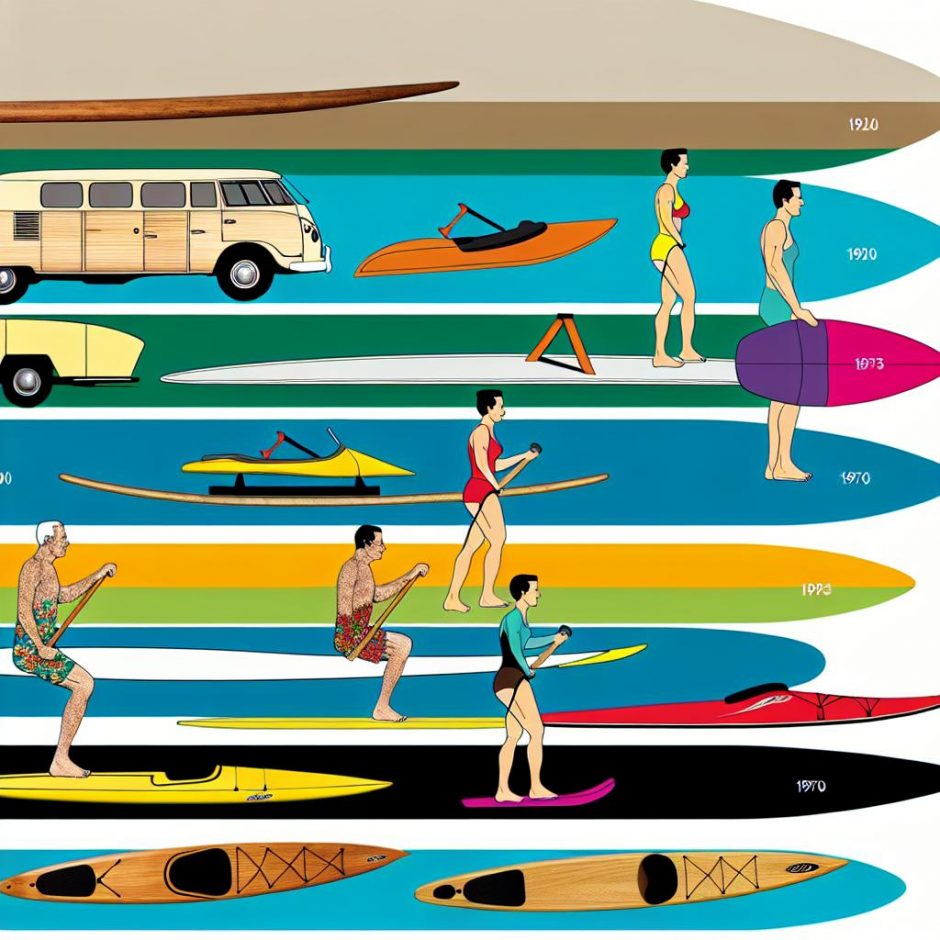The Early Days of Water Sports Equipment
The development of water sports equipment has a rich history that has been propelled by a mix of necessity, creativity, and progress in material science. Initially, humans used watercraft such as canoes and rafts primarily for practical purposes like transportation and fishing. These early vessels were crafted using materials that were easily accessible in nature, such as wood and animal skins. As water sports became more popular for recreation rather than just survival, the need for specialized water sports equipment began to grow.
The Beginnings of Modern Equipment
The closing years of the 19th century and the opening of the 20th century marked a pivotal era for the advancement of water sports technologies. Activities such as canoeing and rowing gained popularity as leisure pursuits, which in turn fueled innovation in their design and construction. Traditionally, canoes were designed for utility and durability; however, with their increased use in sports, there came a need for more efficient vessels. This era saw the adoption of lightweight yet durable materials like laminated wood in crafting watercraft, increasing accessibility and performance for enthusiasts at all skill levels.
The innovation was guided by the goal of creating equipment that could enhance the sporting experience while allowing athletes to achieve better results. These changes not only lowered the barrier for entry into water sports by making equipment more affordable but also made these activities more enjoyable and efficient.
Mid-20th Century Innovations
The period around the mid-20th century was a significant time for the evolution of surfboard technology. Initially constructed from solid wood, surfboards were heavy and challenging to maneuver. The transition to lighter materials, first balsa wood and then polyurethane foam wrapped in fiberglass, revolutionized the sport. This innovation enabled users to perform more dynamic maneuvers on the waves due to the enhanced maneuverability of these newer boards.
During this time, more water sports like waterskiing and windsurfing began to capture public imagination, each sport fostering its own set of equipment advancements. For instance, waterskis evolved from simple wooden planks to specifically shaped and buoyant skis suited for high-speed action. Windsurfing brought about the invention of specialized sail designs that maximized use of the wind to propel athletes across the water.
The Role of Technology in Contemporary Equipment
The latter half of the 20th century introduced synthetic materials and computer-aided design, creating a major impact on the design and performance of water sports equipment. Carbon fiber gained popularity due to its exceptional strength-to-weight ratio, becoming the material of choice for high-performance gear such as kayaks, canoes, and racing boats. This advancement allowed athletes to push the limits of speed and endurance.
Furthermore, computer technology has become integral to designing water sports equipment. Advanced software tools enable designers to simulate and test new equipment, ensuring the perfect contours, shapes, and hydrodynamic properties. This precision engineering optimizes the performance of gear, meeting the increasingly demanding needs of professional athletes and enthusiasts. The use of technology has sparked an evolution in water sports, expanding what’s possible on the water.
Environmental Considerations in Equipment Design
In more recent years, the consciousness towards environmental sustainability has permeated the water sports industry, urging the adoption of greener practices. As environmental issues become more prevalent, the industry has explored the use of recyclable and biodegradable materials in crafting water sports equipment. This commitment to sustainability is reflected in the production of more eco-friendly versions of traditional gear such as surfboards and paddleboards.
In adopting these practices, manufacturers are not only reducing the environmental footprint of water sports equipment but also raising awareness about the importance of environmental stewardship among sports enthusiasts. This movement towards eco-friendly practices represents a compelling shift in how water sports gear is conceptualized and produced, aligning the industry’s future with the need for environmental conservation.
The evolution of water sports equipment stands as a testament to human ingenuity, innovation, and the relentless pursuit of improvement. From early functional designs to today’s sophisticated technological creations, every piece of equipment narrates a tale of innovation and adaptation. As the sports continue to grow, so does the opportunity for future advancements that blend tradition with modern efficiency. To explore the latest innovations and discover more about water sports equipment, enthusiasts can look into great resources such as OutdoorGearLab or delve into the vast world of standup paddling with insights from SUP Magazine.

